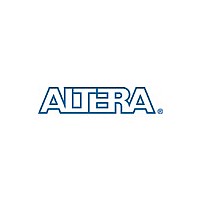ep1agx50d Altera Corporation, ep1agx50d Datasheet - Page 278

ep1agx50d
Manufacturer Part Number
ep1agx50d
Description
Arria Gx Device Data Sheet
Manufacturer
Altera Corporation
Datasheet
1.EP1AGX50D.pdf
(296 pages)
Available stocks
Company
Part Number
Manufacturer
Quantity
Price
Company:
Part Number:
ep1agx50dF1152C5N
Manufacturer:
ALTERA
Quantity:
885
Company:
Part Number:
ep1agx50dF1152C6N
Manufacturer:
ALTERA
Quantity:
246
Company:
Part Number:
ep1agx50dF1152I5N
Manufacturer:
ALTERA
Quantity:
648
Company:
Part Number:
ep1agx50dF780C6
Manufacturer:
ALTERA
Quantity:
3 000
Company:
Part Number:
ep1agx50dF780C6N
Manufacturer:
ALTERA
Quantity:
852
- Current page: 278 of 296
- Download datasheet (4Mb)
Duty Cycle Distortion
Duty Cycle
Distortion
4–124
Arria GX Device Handbook, Volume 1
Duty cycle distortion (DCD) describes how much the falling edge of a
clock is off from its ideal position. The ideal position is when both the
clock high time (CLKH) and the clock low time (CLKL) equal half of the
clock period (T), as shown in
non-ideal falling edge from the ideal falling edge, such as D1 for the
falling edge A and D2 for the falling edge B (see
maximum DCD for a clock is the larger value of D1 and D2.
Figure 4–10. Duty Cycle Distortion
DCD expressed in absolution derivation, for example, D1 or D2 in
Figure
percentage, and the percentage number is clock-period dependent. DCD
as a percentage is defined as:
DCD Measurement Techniques
DCD is measured at an FPGA output pin driven by registers inside the
corresponding I/O element (IOE) block. When the output is a single data
rate signal (non-DDIO), only one edge of the register input clock (positive
or negative) triggers output transitions
DCD present on the input clock signal or caused by the clock input buffer
or different input I/O standard does not transfer to the output signal.
(T/2 – D1) / T (the low percentage boundary)
(T/2 + D2) / T (the high percentage boundary)
4–10, is clock-period independent. DCD can also be expressed as a
CLKH = T/2
Falling Edge A
Figure
Ideal Falling Edge
Clock Period (T)
D1
4–10. DCD is the deviation of the
D2
(Figure
Falling Edge B
CLKL = T/2
4–11). Therefore, any
Figure
Altera Corporation
4–10). The
May 2008
Related parts for ep1agx50d
Image
Part Number
Description
Manufacturer
Datasheet
Request
R

Part Number:
Description:
Section I. Arria GX Device Data Sheet
Manufacturer:
ALTERA [Altera Corporation]
Datasheet:

Part Number:
Description:
CPLD, EP610 Family, ECMOS Process, 300 Gates, 16 Macro Cells, 16 Reg., 16 User I/Os, 5V Supply, 35 Speed Grade, 24DIP
Manufacturer:
Altera Corporation
Datasheet:

Part Number:
Description:
CPLD, EP610 Family, ECMOS Process, 300 Gates, 16 Macro Cells, 16 Reg., 16 User I/Os, 5V Supply, 15 Speed Grade, 24DIP
Manufacturer:
Altera Corporation
Datasheet:

Part Number:
Description:
Manufacturer:
Altera Corporation
Datasheet:

Part Number:
Description:
CPLD, EP610 Family, ECMOS Process, 300 Gates, 16 Macro Cells, 16 Reg., 16 User I/Os, 5V Supply, 30 Speed Grade, 24DIP
Manufacturer:
Altera Corporation
Datasheet:

Part Number:
Description:
High-performance, low-power erasable programmable logic devices with 8 macrocells, 10ns
Manufacturer:
Altera Corporation
Datasheet:

Part Number:
Description:
High-performance, low-power erasable programmable logic devices with 8 macrocells, 7ns
Manufacturer:
Altera Corporation
Datasheet:

Part Number:
Description:
Classic EPLD
Manufacturer:
Altera Corporation
Datasheet:

Part Number:
Description:
High-performance, low-power erasable programmable logic devices with 8 macrocells, 10ns
Manufacturer:
Altera Corporation
Datasheet:

Part Number:
Description:
Manufacturer:
Altera Corporation
Datasheet:

Part Number:
Description:
Manufacturer:
Altera Corporation
Datasheet:

Part Number:
Description:
Manufacturer:
Altera Corporation
Datasheet:

Part Number:
Description:
CPLD, EP610 Family, ECMOS Process, 300 Gates, 16 Macro Cells, 16 Reg., 16 User I/Os, 5V Supply, 25 Speed Grade, 24DIP
Manufacturer:
Altera Corporation
Datasheet:

Part Number:
Description:
Manufacturer:
Altera Corporation
Datasheet:











